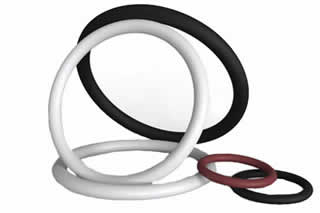
When researching O-rings, you may encounter some unfamiliar terms. O-rings are seals that offer a leak-proof mating surface. They are typically used in machines, vehicles and other types of mechanical equipment. With O-rings, fluids or gases will remain confined to their respective passage. To choose the right O-rings, though, you’ll need to learn some basic terms and what they mean.
#1) Inside Diameter
Inside diameter refers to the size of an O-ring when measured across its interior. You find an O-ring’s inside diameter by stretching a measuring tape from the left-most interior section to the right-most interior section.
#2) Outside Diameter
Outside diameter, on the other hand, refers to the size of an O-ring when measured across its exterior. The outside diameter is almost always longer than the inside diameter. If you’re going to buy one or more O-rings, you’ll need to consider both the inside diameter and outside diameter.
#3) Groove
All O-rings have a groove. The groove is a recessed section along the perimeter of an O-ring that allows it to fit inside of a machine. Machines have passages or hoses for pressurized liquids and gases. At the end of these passages and hoses is a protruded ring. With a groove, you can slide an O-ring over this protruded section so that it stays in place.
#4) Hardness
Hardness, of course, refers to the hardness level of an O-ring. Different O-rings are made of different materials, some of which are harder than others. A hardness of 40 is considered soft, whereas a hardness of 90 is considered hard. You can measure the hardness of an O-ring by using a Shore A Durometer.
#5) Face
There are face O-rings. A face O-ring is a type of mechanical seal that’s characterized by the way in which it seals. Face O-rings seal in a place that’s perpendicular to their axis. This unique design offers a clean and flush mating surface.
#6) Tensile
Tensile is another term that you should know when shopping for O-rings. It’s how much force, measured in pounds per square inch (PSI), an O-ring can withstand without breaking. The higher an O-ring’s tensile, the more force it can withstand.
#7) Flash
Finally, O-rings have a flash. The flash is a section of excess material that’s left around an O-ring’s parting lines. Most O-rings have some flash. You can find it along the parting lines.
